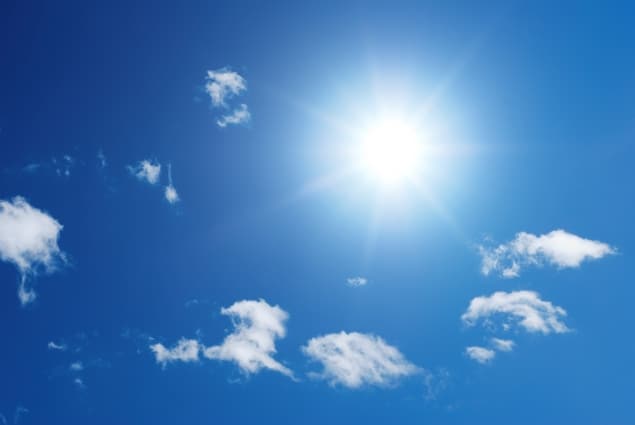
Periods of heavy summer rain will become more persistent in the northern hemisphere as the climate warms – according to scientists in the UK, Germany and the Netherlands. The team also predicts that summer heatwaves and droughts will last longer in some parts of the hemisphere, with the changes being driven by the slowing down of large-scale atmospheric circulations.
Climate change is already expected to intensify heat and rainfall extremes. This latest study looks instead at its impact on the clustering of wet days and hotter than average days, finding that both hot and wet weather events will persist for longer if global temperatures rise to 2 °C above pre-industrial levels.
The researchers say that this is important because although extreme weather events are commonly discussed in terms of their intensity and frequency, it is often persistence that leads to the most severe effects. Extended periods of hot and dry weather can have serious public health, agricultural, environmental and economic impacts, while consecutive days of heavy rainfall raise the risk of severe flooding.
Four general circulation models
To assess changes in the persistence of extreme summer weather under climate change the team compared ten-year future scenarios from four general circulation models with climate data from 2006 to 2015.
These models were used to identify periods of consecutive warm, dry, dry–warm or rain days. Rain days were those with more than 5 mm of precipitation, while days with less than 1 mm were considered dry. To identify heatwaves relative to warmer climate conditions, not just present-day conditions, warm days were defined as those with temperatures exceeding a scenario-dependent and location-specific median.
According to the study, if the world warms to 2 °C above pre-industrial temperatures, periods of at least seven consecutive days of heavy summer rain will increase by 26% across the northern hemisphere, compared with today’s climate. Both warm and warm-dry periods that last longer than two weeks are also predicted to increase by 4%.
Heavy rain for longer
“Our study found that if the world warms to 2 °C above pre-industrial levels, we could see a significant shift in summer weather conditions from the patterns we know today. Extreme weather would become more persistent – hot and dry periods, as well as consecutive days of heavy rain would all get longer,” says Peter Pfleiderer, a climate scientist at Humboldt University in Berlin.
We consistently find lesser effects when working in the 1.5 °C scenario
Kai Kornhuber
Increases in persistent warm periods would be most pronounced in northern Asia, central Europe and eastern North America. These regions would also see an increase in persistent dry weather, according to the study, with eastern North America seeing increases in long dry-warm periods of 20%. The biggest increases in long wet periods will be seen in northern and central Europe, and northern Asia.
The researchers also highlight the predicted lengthening of dry-warm periods in important agricultural regions, such as central North America, and northern and central Europe, stating that it poses a serious risk to food production. The summer heatwave of 2018 serves as a warning: persistent dry-warm periods in western Europe, which ran from April to September, with few breaks, contributed to a 15% reduction in the German wheat harvest.
Weakening circulation
The researchers say that the weakening of large-scale summer atmospheric circulation patterns, such as storm tracks and the jet stream, that move weather and storms around, is likely an important driver of the increased weather persistence. Their analysis found that the weakening summer storm tracks are predicted by all models, with previous research linking a slow-moving stationary wave in the jet stream to persistent extreme weather events in the summer of 2018.
“The weakening of storm tracks can contribute to an increased persistence of these dry and hot days, and that is consistent with other studies that show that these storm tracks will continue to weaken in a warmer climate,” says team member Kai Kornhuber, who is at Columbia University.

Summer weather extremes linked to stalled Rossby waves in the jet stream
If warming can be limited to 1.5 °C above pre-industrial levels, however, then the team has shown that the impact on heatwaves is reduced. For example, dry–warm persistence is projected to increase by 10% in central North America and central Europe if global temperatures rise by 2 °C, but there is no predicted change under 1.5 °C scenarios. This suggests a nonlinear dependence of dry–warm persistence with mean temperature rises, the researchers say. Rain persistence, however, increases almost everywhere with 1.5 °C of warming, scaling linearly with global mean temperatures.
“We consistently find lesser effects when working in the 1.5 °C scenario,” Kornhuber says, adding that this underlines the idea that risks can be prevented if we stick to the Paris Agreement. “Half a degree matters,” he says.
The research is described in Nature Climate Change





